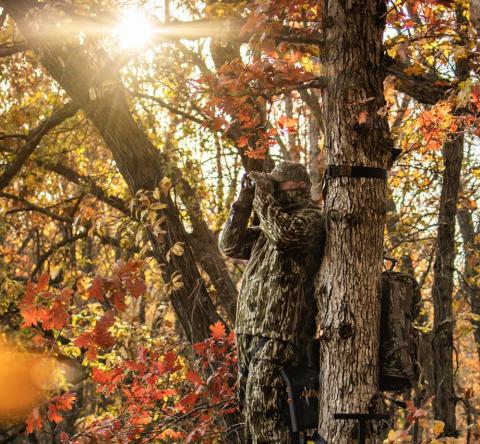By George Fiorille
Steve Fland considers himself as a self-taught wildlife artist. His creations are nothing short of extraordinarily realistic.
His carvings allow mother nature to come to life from an ordinary block of wood. Upon seeing them in person, they can’t help but take your breath away. The incredible detail he puts in each piece, is hard to imagine. In his artwork, he captures the true beauty of nature that will last for generations.
Steve is currently a retired Middle School Life Science teacher of 36 years. He did graduate work at Cornell University in Ithaca, New York and assisted the late, renowned ornithologist Dr. Paul Kellogg. Fland from Moravia, New York began his carving back in 1978. While running a wildlife gallery with a fellow teacher, he viewed the wildlife pieces he was selling, and thought to himself, “I can do that!” He currently lives on Owasco Lake where he surrounds himself with beauty and nature creating the perfect environment to inspire his creations.
Pictured: Carving by Steve Fland. Female Loon and Loonlets.
He rates a carving of a juvenile Coopers Hawk as his finest overall. The hawk has a dead Mourning Dove in its talons. Fland carved this piece as a sign of one of nature’s most efficient predators. As an artist, he tries to reflect a desire to capture “the character of the bird,” and its habitat and behavior. A Blue bird carving sitting on a Pussy Willow branch depicts the time of the year the bird is in.
According to Steve, another one of his finest and unique creations was that of an American Bald Eagle that he experienced in real life. He came around the corner of his lake house one day and saw an American Bald Eagle only a stone's throw away on the shoreline. Upon viewing the bird up close, he realized that the eagle was eating a Mallard Drake duck. This motivated him to do a life-sized carving of the two birds. The person that commissioned him to do it requested a Wood Duck be with the eagle.
His carvings are quite time consuming. The Loon shown here took approximately 364 hoursto finish. After making the loon, he then added a pair of chicks. They were done by first carving out of wood, then electrostatically flocked, then painted. The eagle and wood duck carving mentioned, took 1,500 hours. Before a carving is done, Fland will research the bird, possiblyeven buying aviary samples to study. He will even go as far to study the environment the species lives in to get the base such as leaves and branches realistic.
He may do his carving with a wide array of tools. That can range all the way from a chainsaw to a wood chisel, to a Dremel tool, to a dentist’s drill. He goes through several procedures to come up with the final lifelike masterpiece. The first step is called blocking which consists of choosing the correct size of rough wood to finish. He uses woods such as Tupelo, Basswood, or Black Walnut.

Pictured: Carving by Steve Fland. American Woodcock.
Next a drawing of the wildlife that is to be carved may be temporarily attached to the wood. This helps him visualize what the block of wood will become.
Next comes the texturing process. This can be done with various cutting or carving tools. A crucial step ahead is the burning move. This intricate operation uses a wood burning tool that gives life-like images of each individual feather. One of the last painstaking steps and one that gives the greatest detail is the painting. Fland will use several thin coats of acrylic paint to finish his masterpiece.
When Fland first started, he only made waterfowl carvings that were decoy classified and had to float on water naturally. He then progressed to carving a wide array of wildlife carvings thatwill stand and float both. While waterfowl, birds of prey, and songbirds are his specialties, he has also done some distinctive carvings. He has done many special carvings for some prominent people over the years...no names mind you.
He has carved what he calls his “Dinner Series,” out of black walnut. He once did a piece that featured a piece he called “Al and Woody.” It features a head of an American alligator with a wood duck’s foot sticking out of its mouth with a feather of the bird resting on its snout.Another piece in the series is a common snapping turtle rising up from a submerged tree to eat a Mallard ducking. The third piece and possibly most unique is of the head and back of a Hippo sticking out of the water. On the Hippo’s back is two cattle egrets. The Egrets will land on the back of cattle and eat parasites on the animal.

Pictured: Carving by Steve Fland. Bufflehead Drake.
He has carved decorative pieces over the years as well. One of his favorites of this type is a coffee table. The table features a Kingfisher with a yellow perch.
Steve has competed in many wildlife carving competitions over the years. Since 1979, he has been a consistent winner in open/professional contests. He was “Sculptor of the Year” at the1988 Northeastern Wildlife Exposition. Since the 1982 U.S. National Decoy Competition, he has won five “Best of Show” awards. He has won “New York State Sculptor of the Year,” in 1993, 1998, 2001, 2005 and 2007.
Fland even has a couple of duck decoy series that were originally made from his carvings. One is a floating series made by Light and Lethal. The other is a mechanically operated duck.
Fland does have some available inventory to sell. Most of his work is done on a commission basis. He determines price by size, species, and complexity of habitat. He can be reached at his website at www.stevenflandgallery.com or email at stevenflandgallery@gmail.com .






























